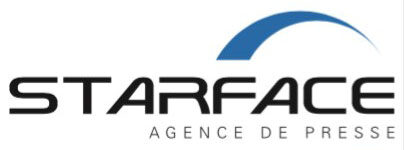Exclusive : Focus on Hubert Henrotte by Michel Puech in La lettre de la photographie 2011/08/31
“Today, many millions of Sygma’s photographs, black and white and color originals are sleeping in a bunker near Dreux…” The man that said this, with a dry but calm tone, his voice tainted with anger and emotion is Hubert Henrotte, 77, retired, laid off from the company he created in 1973 under the name Sygma, resulting from the painful implosion of the Gamma agency he also founded in 1967.
On June 10th, 1998, under pressure from controlling shareholders, Hubert Henrotte was forced to leave the rue Lauriston office, near Paris’ place de l’Etoile. He quite naturally suffered from depression. When the infernal 24/7 newsroom rhythm ends, the phone stops ringing , press professionals often find themselves in a deadly state of emptiness that, at the very least, knocks them out.
Rejuvenated into a man of action, the journalist and outstanding manager he’s always been, discreet, without a complaint, is now inhabited by a deaf and sad anger. Over the past few years, during the numerous lawsuits filed by Sygma photographers against new owner Bill Gates’ Corbis, Sygma’s management has often been criticized. Even worse for the former chief executive and founder, development of the company’s vision was hidden, denaturalized.
After numerous email exchanges, phone calls or meetings at Parisian brasseries, Hubert Henrotte has decided to clarify. This is the reason for this exclusive interview.
As you know, after Corbis acquired Sygma, bankruptcy was filed by Corbis-Sygma, after HFM acquired the acquisitions of Gamma, Rapho and other agencies, bankruptcy was declared by the new buyer, the Eyedea group. This summer, the last of the three major French photo agencies, Sipa, was bought out by the German group DAPD…. In hindsight, do you think these types of agencies were good for photographers ?
Hubert Henrotte: “Of course, the established system with Gamma and then Sygma was beneficial to photographers. It’s normal as these two agencies were created by photographers, for photographers.
Don’t forget that at the time, I was, along with many other reporters, very involved in the National Association of Photojournalists and Filmmakers (ANJRPC). We were concerned about our picture credits, negative ownership, and the respect of our copyrights. We created Gamma to impose that on the profession.
Our goal was clearly reached, as witnessed by the incredible success of these two press agencies until 1988! Despite the fact that complications began to rise after Gamma’s rupture, creating two competing companies.
Social charges and payroll costs increased from 25 to 75%. In 1975, the Cressard Act legally established photographers as salaried employees. The infamous 50/50 (equal sharing of expenses and profits between the photographer and the agency) could no longer be maintained.
Add to that the beginning of the press crisis. The economic model was, then, completely inaccurate. From that moment on, photographers should have had a clearer understanding of the situation.”
When the computer era arrived in the press, how did you react ?
Hubert Henrotte: “We were well informed. In 1977, Sygma became the first computerized French press agency. And in 1981, we had the first video disk: ten thousand photos available on a screen.
Digital was invading, forcing us to make huge investments. To cover costs, I lost controlling shares of the company by accepting a new partner. Big mistake. If I’ve ever made one, that was it!
Later, the luck that followed us since the creation of Gamma seemed to disappear: My first two partners, Robert Maxwell (1988) and Bruno Rohmer (1992) successively filed for bankruptcy.
In 1991, the beginning of the Gulf war caused the oil crisis, and for Sygma it meant the first digital transmission of images via satellite. A real world exclusive.
From 1995 on, we began to manage a bank of digital images in high definition, indexed, captioned and in two languages, available to all our clients worldwide! We had an amazing tool in our hands to accompany this huge revolution.
Sygma was ahead compared to the competition and those emerging. How did this agency, having this technological innovation, pass under Bill Gates’ control ?
Hubert Henrotte: “That is correct, we were really advanced, but it was also necessary to finance basic investments! France has never invested in innovation, and at the time, we had no help. We sought out financing. I looked for investors. After four years of research, only one emerged, from real estate!
I thought it was a miracle! But we weren’t real businessmen… No comparison with the financial world.
Without Bruno Rohmer, the company that would acquire his shares signed a seemingly valid contract: a five million franc equity increase and fifty million in technological investments over four years! Just what we needed!
The rest resembles what we read in newspaper headlines! The equity increase never materialized, and the investments only amounted to two or three million French Francs.
However, given the investments promised, we started buying computer equipment and software, without knowing that the new management board could refuse any contract they considered unnecessary. And that’s what happened.
It was our daily turnover, fueled only by photo sales, that was used to cover incoming invoices driving the agency into an increasingly worse situation.
The new partner was not at all interested in our plans they considered implausible. They hoped for only one thing, a profitable resale of the company!
The operation began when I was fired after 25 years as head of Sygma, convincing staff that I had resigned! A year later, Sygma’s buyout by Bill Gates was official. He acquired the agency with Corbis which was then reduced to selling pictures on CD’s!”
During litigation about lost images, a certain “relaxed management” of original photographs was evoked by lawyers. Can you describe how Sygma’s archives were handled ?
Hubert Henrotte : “Corbis-Sygma and the Sygma agency were not in the same business. To say, for instance, that organizing pictures by theme and not by photographer was like looking for a needle in a haystack is absurd. It shows complete ignorance of business practices at the time. Miterrand had been photographed by over twenty Sygma staffers. If we had to look through all twenty files to find a picture, we would be still looking, and the agency would never have made 35% of its sales through the archives. Nevertheless, every picture was numbered and, since 1979, most were digitally filed and readily available.
Lost pictures? Of course, there were, as in any other agency. Keep in mind these agencies were fiercely competitive. Magazine editors took advantage of that competition and would demand color originals or black and white negatives or they would threaten to use another agency’s work. Paris Match, as most magazines, kept published originals in their archives to be able to reuse them in case of need.
For instance, they just returned a Gilles Caron negative from May 1968, forty three years later! Others were buried in magazine or photo lab bankruptcies. Agency sales teams undeniably lacked vigilance.
But from that concept to accept the loss of photographs, I am still baffled. I am certain however that it wasn’t the case when I left in 1998. What happened after I left? Entire files disappeared during the move? I can’t say, I was no longer there.
In any case, how could Corbis skirt French regulation specifying that the photographs belong to the photographers even if they are employees? Accusing Sygma of being lenient in these conditions shows carelessness during acquisition negotiations. And what about today’s Corbis management style, decried more and more by photographers?
Interview by Michel Puech
Links
Contributors
Monday
Tuesday
Wednesday
Thursday
Friday
Weekend Agenda
© La Lettre de la Photographie 2011 | Terms and ConditionsDernière révision le 24 septembre 2020 à 5:42 pm GMT+0100 par
Et pour ne rien louper, abonnez vous à 'DREDI notre lettre du vendredi

 Qui sommes nous ?
Qui sommes nous ?










